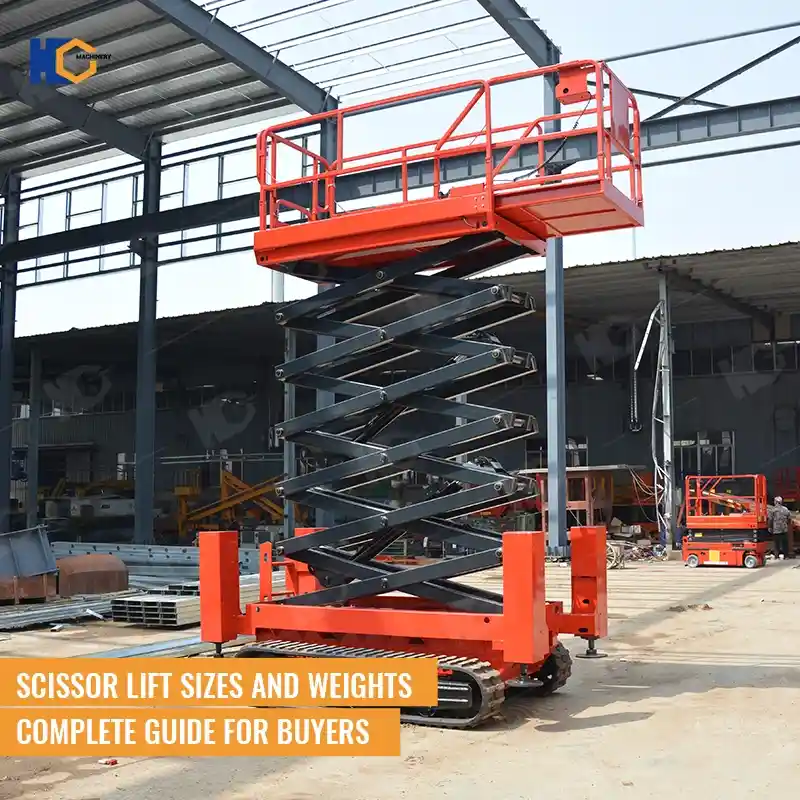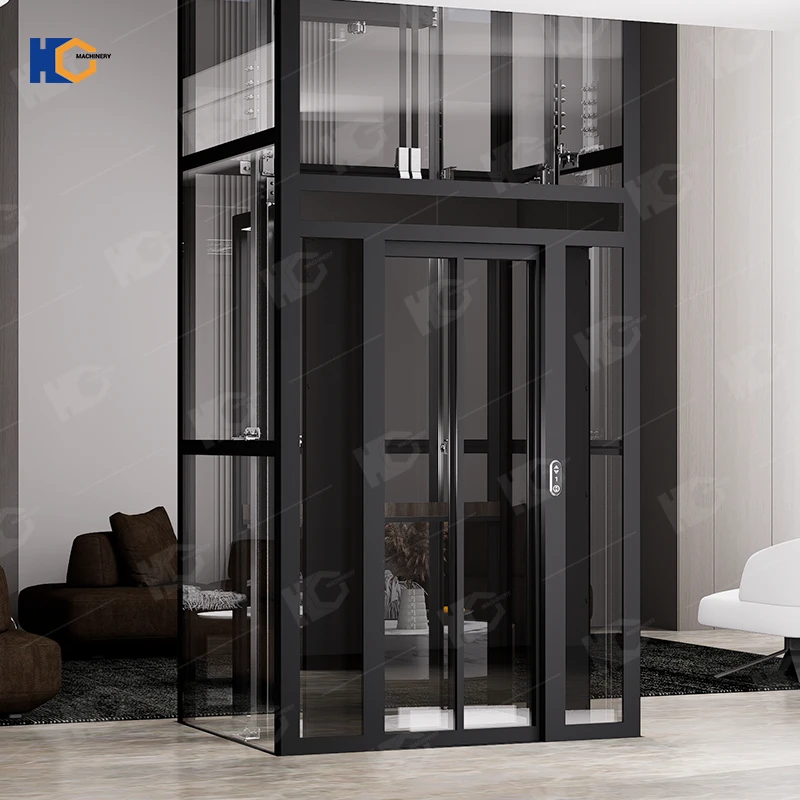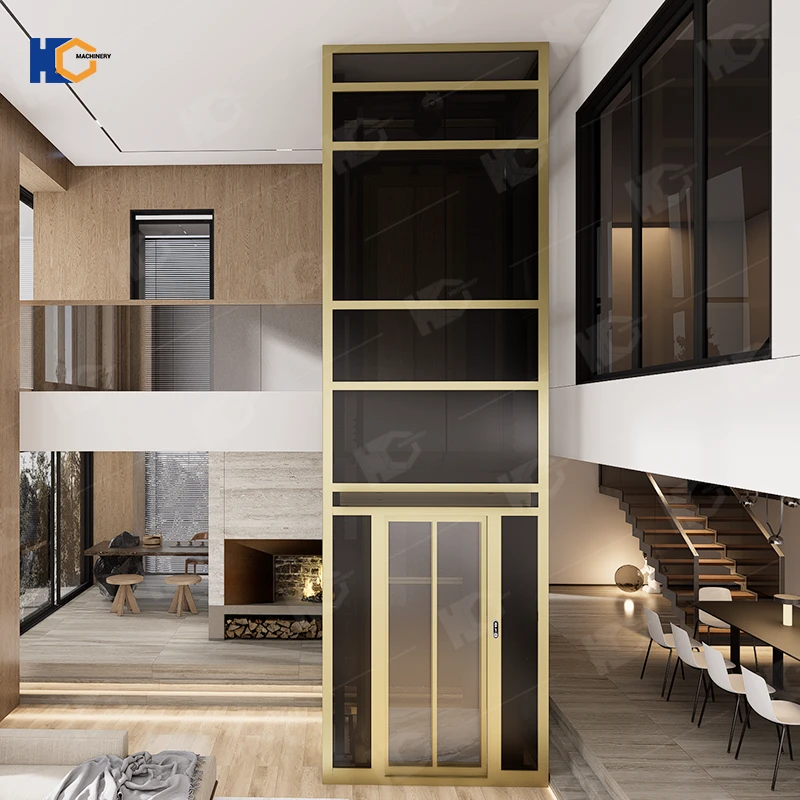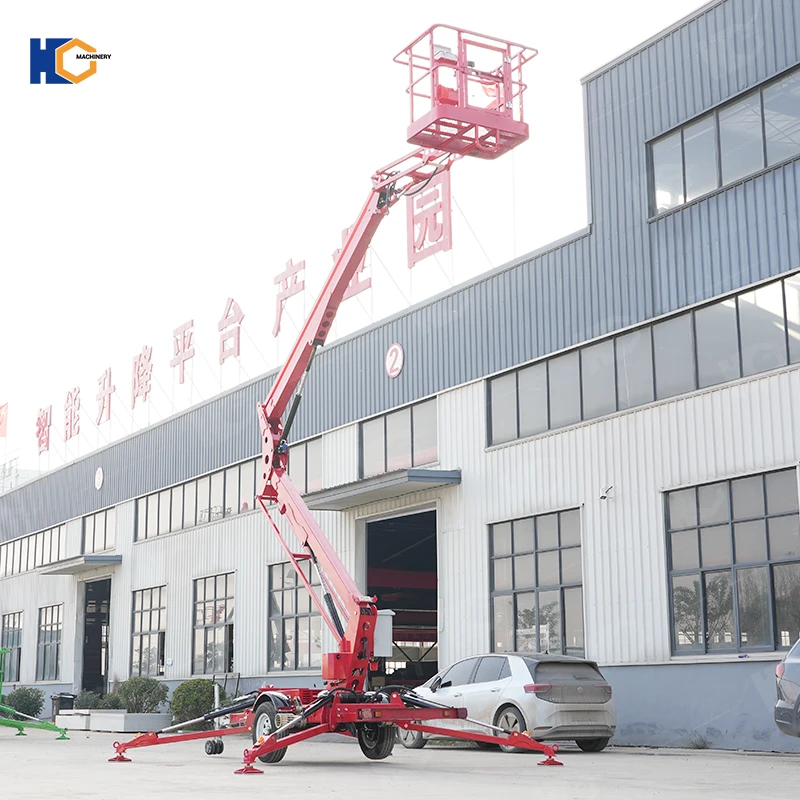Scissor lifts are a type of aerial work platform used to safely lift workers and equipment to elevated heights. Commonly used in construction, maintenance, warehousing, and facility management, scissor lifts offer a stable platform that moves vertically through a crisscrossing (scissor-like) mechanism. These machines come in various sizes and configurations, including electric models for indoor use and diesel-powered units for outdoor or rough terrain applications.
When it comes to purchasing or renting a scissor lift, understanding the sizes and weights of different models is essential. The wrong size could limit access in tight workspaces or fail to meet height requirements. Similarly, a lift that’s too heavy for the job site’s floor load rating could cause safety hazards or equipment damage. Knowing both the machine dimensions and weight ensures proper transportation, storage, and compliance with site regulations.
This complete guide is designed for buyers and decision-makers who want to make an informed choice. Whether you're a construction contractor, warehouse operator, facility manager, or rental equipment supplier, this article will help you navigate key specifications like platform height, overall size, lifting capacity, and weight. With this knowledge, you’ll be better equipped to select a scissor lift that fits your operational needs, budget, and safety standards.
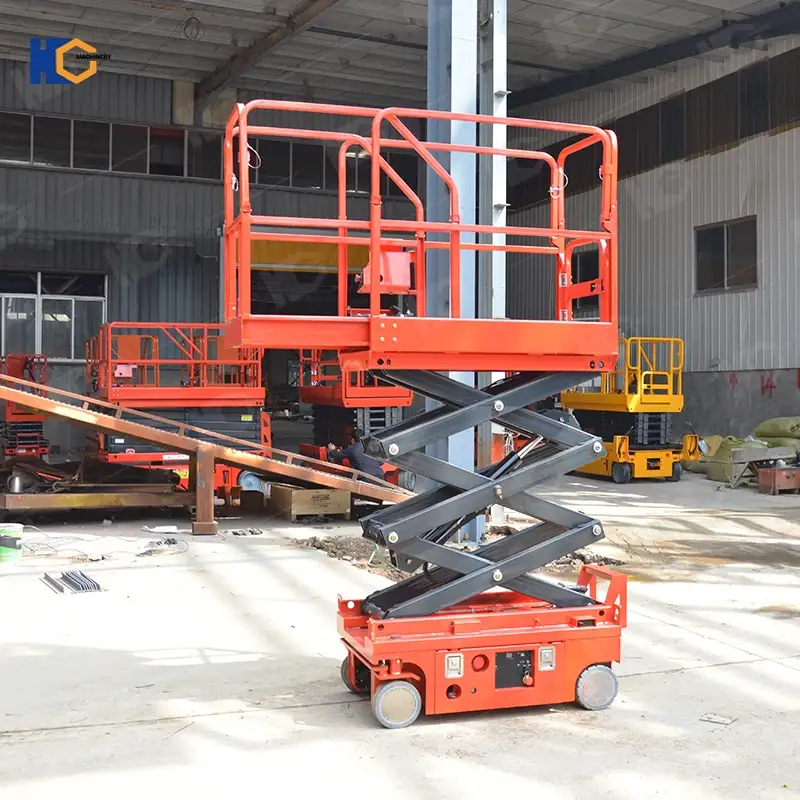
Types of Scissor Lifts
Scissor lifts come in a wide range of types, each designed for specific applications and environments. Understanding the differences between them is key to choosing the right model for your needs. Below are the most common scissor lift classifications:
Electric vs. Diesel Scissor Lifts
Electric scissor lifts are battery-powered and produce no emissions, making them ideal for indoor environments where ventilation is limited. They are quieter, require less maintenance, and are commonly used in warehouses, retail stores, and indoor construction projects.
In contrast, diesel scissor lifts are designed for outdoor use. They are more powerful, can reach higher platforms, and are better suited for rugged or uneven terrain. However, they emit exhaust fumes and are louder, which limits their use in enclosed spaces.
Indoor vs. Outdoor Use
Scissor lifts are often categorized by where they are best used. Indoor scissor lifts are typically electric, compact, and lightweight, allowing for easy navigation in narrow aisles or confined spaces. Their non-marking tires help protect floors.
Outdoor scissor lifts, on the other hand, are generally larger, more robust, and often diesel-powered. They are equipped with features like foam-filled or rough terrain tires, higher ground clearance, and stabilizing outriggers to handle unpredictable surfaces and wind loads.
Rough Terrain vs. Slab Models
Rough terrain scissor lifts are built for challenging outdoor environments. They feature 4-wheel drive, larger tires, and enhanced stability systems, making them ideal for construction sites, uneven surfaces, or undeveloped land.
In contrast, slab scissor lifts are made for smooth, level surfaces such as concrete or finished floors. They are commonly used indoors and have limited ground clearance but offer excellent maneuverability in tight spaces.
Compact vs. Full-Size Units
Compact scissor lifts are narrow, lightweight, and designed for tight access areas. They’re perfect for indoor work or tasks in congested environments like office buildings or small warehouses.
Full-size scissor lifts offer greater platform height, larger deck space, and higher load capacities. These are better suited for heavy-duty tasks such as outdoor construction or large-scale maintenance projects.
Choosing the right type of scissor lift depends on your specific work environment, height needs, and mobility requirements. Each type has its advantages depending on the job.
Common Scissor Lift Dimensions
When selecting a scissor lift, understanding its physical dimensions is crucial. These machines vary widely in height, width, length, and maneuverability depending on their type, intended use, and manufacturer. Knowing these specs helps ensure the lift fits the working environment and meets both safety and logistical requirements.
Platform Height Range (6 ft to 60 ft)
One of the most important dimensions of a scissor lift is its platform height—the maximum vertical distance from the ground to the platform when fully extended. Most standard scissor lifts offer platform heights ranging from 6 feet (1.8 meters) to 60 feet (18.3 meters).
Low-level access lifts (6–19 ft) are commonly used for indoor maintenance, ceiling work, or retail displays.
Mid-range lifts (20–32 ft) are ideal for warehouse shelving, electrical work, or indoor installations.
High-reach lifts (33–60 ft) are used outdoors on construction sites or for facade work on multi-story buildings.
The working height—which includes the average operator height—typically adds 6 feet to the platform height.
Platform Width and Length
Scissor lift platforms vary in size depending on the model. Typical platform widths range from 2.5 feet (0.76 m) for compact indoor models up to 7 feet (2.1 m) or more for large outdoor lifts. Platform lengths usually range from 5 feet (1.5 m) to 12 feet (3.6 m), and many models offer extendable decks to give workers more room to operate.
Wider platforms offer more workspace and higher load capacities, but may be harder to maneuver in tight spaces. Compact platforms are easier to navigate through doorways or narrow aisles.
Stowed Height and Width (for Storage and Transport)
The stowed height of a scissor lift refers to its vertical height when fully collapsed. This is important for transport, storage, and indoor access, such as passing through standard doorways or riding in freight elevators. Stowed heights generally range from 4 feet (1.2 m) to 10 feet (3 m) depending on the model.
Stowed width is equally important, especially for navigating tight indoor areas or fitting into transport trailers. Narrow models can be as slim as 30 inches (0.76 m), while larger rough terrain models may exceed 7 feet (2.1 m) in width.
Turning Radius and Maneuverability
Scissor lifts vary in their turning radius and ease of movement. Compact electric models often feature zero inside turning radius, allowing them to pivot in place—ideal for tight indoor environments.
Larger units, particularly diesel and rough terrain models, require more space to turn due to their longer wheelbases and wider frames. This makes maneuverability a key factor when working in confined outdoor or uneven job sites.
Some lifts are also equipped with crab steering or four-wheel steering, which enhances maneuverability in restricted or angled areas.
Understanding these common dimensions ensures you choose a lift that not only reaches the desired height but also fits your workspace, storage area, and transport method. Always check the manufacturer’s spec sheet for exact measurements before purchase or rental.
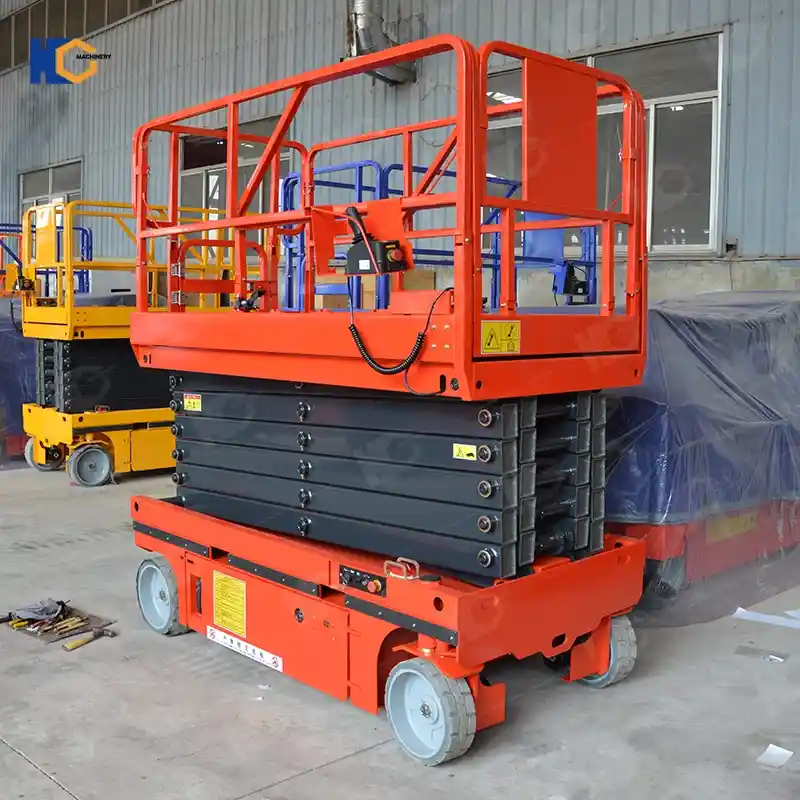
Scissor Lift Weight Chart
Scissor lifts vary greatly in weight depending on their size, power source, and features. The machine weight impacts transport, storage, and surface requirements, while load capacity affects how much weight the lift can safely carry on its platform.
Typical scissor lifts weigh anywhere from 1,500 lbs (680 kg) for small, low-level models to over 15,000 lbs (6,800 kg) for large rough terrain units. It's important to note that machine weight is not the same as platform capacity—the latter refers to how much load (people, tools, and materials) the platform can handle.
Below is a chart comparing several common models across different categories:
| Model | Platform Height | Machine Weight | Load Capacity | Type |
|---|---|---|---|---|
| Genie GS-1930 | 19 ft (5.8 m) | 2,702 lbs (1,226 kg) | 500 lbs (227 kg) | Electric Indoor |
| JLG 2030ES | 20 ft (6.1 m) | 3,450 lbs (1,565 kg) | 800 lbs (363 kg) | Electric Indoor |
| Skyjack SJIII 4632 | 32 ft (9.8 m) | 5,235 lbs (2,374 kg) | 700 lbs (318 kg) | Electric Indoor |
| Genie GS-4390 RT | 43 ft (13.1 m) | 10,500 lbs (4,763 kg) | 1,500 lbs (680 kg) | Rough Terrain |
| JLG 530LRT | 53 ft (16.2 m) | 15,200 lbs (6,895 kg) | 1,500 lbs (680 kg) | Rough Terrain |
When choosing a scissor lift, always consider both the weight of the lift itself and its maximum platform capacity. The heavier the machine, the more stable it generally is—but it also requires stronger flooring and specialized transport. Review these figures carefully to ensure compatibility with your job site and lifting needs.
Factors Affecting Size and Weight
When selecting a scissor lift, several factors influence its overall size and weight. Understanding these elements will help you choose the most suitable lift for your work environment and operational requirements.
Platform Extension Decks
Many scissor lifts come with platform extension decks that increase the working area without significantly increasing the base size. These extensions allow operators to reach further or provide additional space for tools and materials. However, adding an extension deck does increase the platform’s overall length and can add a small amount of weight to the machine. While the base weight might remain stable, the extended deck can affect maneuverability and transport dimensions, especially when navigating through narrow spaces.
Power Source (Battery vs. Engine)
The type of power source is a major factor affecting weight and size. Electric scissor lifts, powered by batteries, tend to be lighter and more compact. Batteries add weight, but electric motors are generally smaller and require less space than combustion engines.
On the other hand, diesel or gas-powered scissor lifts are heavier because engines and fuel tanks occupy more space and add significant mass. These models are built tougher to handle outdoor environments, resulting in increased structural weight. The heavier weight improves stability on uneven terrain but also demands more effort and planning for transport and setup.
Material Construction (Aluminum vs. Steel)
The construction materials used in the frame and platform significantly impact the overall weight. Many scissor lifts are made primarily from steel, which offers superior strength and durability but adds considerable weight. Steel lifts are ideal for rough terrain and heavy-duty applications where ruggedness is a priority.
Alternatively, some models incorporate aluminum or lighter alloys to reduce weight. Aluminum construction is common in compact, electric lifts designed for indoor use. These lighter materials make the lift easier to transport and maneuver but may not be as durable for harsh outdoor environments.
Additional Features
Extra features can also affect size and weight. For example, non-marking tires are popular for indoor use to protect floors but can weigh more than standard tires. Outriggers and stabilizers—used on some outdoor lifts—add both weight and width but improve stability and safety on uneven ground.
Other add-ons, like enhanced safety rails, control panels, or upgraded battery packs, can also contribute to the overall mass. While these features improve usability and safety, they should be considered when calculating transport requirements and floor load limits.
By carefully evaluating these factors, buyers can better understand how size and weight vary across models and choose a scissor lift tailored to their operational needs.
Why Size and Weight Matter
Understanding the size and weight of a scissor lift is essential not only for selecting the right equipment but also for ensuring smooth operations on and off the job site. These factors influence transportation, site access, safety, and storage, all of which affect project efficiency and cost.
Transportation and Towing Limits
One of the first considerations is how the scissor lift will be transported to and from the job site. Heavier and larger lifts require specialized trailers, cranes, or forklifts for loading and unloading. For example, lifts weighing over 10,000 lbs (4,536 kg) may need flatbed trailers and permits for road transport due to weight restrictions.
Towing capacity is also crucial if you plan to move the lift with a pickup truck or smaller vehicle. Compact lifts under 3,000 lbs (1,360 kg) can often be towed easily, but larger models will require heavy-duty vehicles. Ignoring transportation limits can lead to delays, added expenses, or safety violations.
Site Access and Floor Loading
Scissor lift dimensions affect whether the machine can physically enter and operate within a job site. Narrow doorways, tight aisles, or confined spaces require smaller, more maneuverable lifts. In contrast, large outdoor construction sites may accommodate bigger units.
Weight matters for floor loading capacity—especially indoors. Floors in warehouses, factories, or commercial buildings have specific load ratings. Using a scissor lift that exceeds these limits risks structural damage or collapse. It’s essential to match the lift’s weight and footprint to the site’s floor specifications to maintain safety.
Safety and Compliance with Job Site Requirements
Every job site has safety rules and regulations that relate to equipment size and weight. OSHA and ANSI standards mandate maximum load capacities and stability criteria. Overloading or using a lift too heavy for the surface can cause tipping or accidents.
Weight also influences how stable the lift is. Heavier lifts generally offer better stability, especially on uneven terrain, but can be harder to control indoors. Choosing the correct weight class helps ensure compliance and reduces the risk of injury.
Storage and Warehouse Considerations
After use, the scissor lift needs appropriate storage space. Larger lifts require more room and higher ceilings. A compact, lightweight lift is easier to move around warehouses or storage facilities and can fit into smaller storage bays.
Weight impacts the type of flooring or shelving available for storing the machine. Proper storage extends equipment life and prepares it for quick deployment when needed.
By carefully considering size and weight, buyers can avoid costly mistakes, improve safety, and ensure the scissor lift fits seamlessly into their operations.
Choosing the Right Scissor Lift for Your Needs
Selecting the ideal scissor lift requires careful evaluation of your specific project needs and working conditions. Whether you’re buying or renting, asking the right questions upfront can save time, money, and prevent safety issues.
Questions to Ask Before Buying or Renting
Start by clarifying your operational requirements:
What is the maximum platform height needed?
Will the lift be used indoors, outdoors, or both?
What are the space constraints at the job site?
What is the expected load capacity, including workers and equipment?
How will the lift be transported to and from the site?
Are there any specific safety or compliance standards to meet?
Answering these helps narrow down the options and guides you toward models that fit your needs precisely.
Matching Lift Specs to Project Requirements
Once you know your requirements, compare them with the lift specifications. For example, if you need to work at heights under 20 feet in a warehouse, a compact electric scissor lift with a narrow platform and lightweight design is best. For construction sites needing over 40 feet of reach and rough terrain capability, a diesel-powered, full-size model will be more suitable.
Pay close attention to platform size, load capacity, and maneuverability. Don’t forget to factor in the stowed dimensions for storage and transport.
Considerations for Tight Spaces, High Reach, and Heavy Loads
Tight Spaces: Choose lifts with narrow widths, small turning radii, and zero inside turning if indoor access is limited. Compact electric models excel here.
High Reach: For working at greater heights, prioritize models with stable platforms and adequate weight for safety, especially outdoors.
Heavy Loads: Ensure the lift’s load capacity exceeds the combined weight of personnel, tools, and materials. Overloading risks accidents and equipment damage.
By carefully evaluating these factors, you can select a scissor lift that maximizes productivity while ensuring safety and convenience throughout your project.
Regulatory and Safety Considerations
When working with scissor lifts, adhering to regulatory standards and following safety guidelines is essential to protect operators and maintain compliance with legal requirements.
OSHA and ANSI Standards
The Occupational Safety and Health Administration (OSHA) and the American National Standards Institute (ANSI) set important regulations governing the design, operation, and maintenance of scissor lifts. OSHA’s regulations (29 CFR 1926.453) outline requirements for fall protection, proper use, and load capacities, while ANSI A92.20 and A92.22 provide detailed standards for the safe design, testing, and use of aerial work platforms.
These standards emphasize that scissor lifts must be operated within their specified weight limits and inspected regularly to ensure mechanical integrity.
Weight Capacity vs. Load Limits: Avoiding Overloading
One of the most common safety risks with scissor lifts is overloading the platform. Each lift has a clearly defined weight capacity that includes the combined weight of the operator(s), tools, and materials. Exceeding this limit can compromise stability, increase the risk of tipping, and cause structural damage to the lift.
Operators should always check the lift’s load chart before use and never attempt to exceed the maximum rated capacity. Distributing weight evenly across the platform also helps maintain balance and reduces stress on the equipment.
Safe Operating Practices
Safe operation involves more than weight limits. Operators must be trained and certified to use scissor lifts safely, including proper positioning, movement, and emergency procedures. Before use, a thorough inspection should check for mechanical issues, tire condition, and the functionality of safety devices like guardrails and emergency stops.
Operators should avoid sudden movements, especially when elevated, and never use the lift in adverse weather conditions such as strong winds or rain. Clear communication and adherence to manufacturer guidelines are vital to prevent accidents.
Following these regulatory and safety considerations ensures safe, efficient scissor lift operation and compliance with workplace laws.
Conclusion
Choosing the right scissor lift requires a clear understanding of sizes, weights, and key features to match your project needs. From platform height and load capacity to maneuverability and power source, every factor plays a role in ensuring safe and efficient operation. Remember, knowing the weight of the machine and its load limits helps with transportation, site access, and compliance with safety regulations.
Before making a decision, always consult with a trusted dealer or manufacturer. Review detailed spec sheets carefully to confirm dimensions, weight, and capacity meet your job requirements. Don’t hesitate to ask questions about features that matter most for your application, whether it’s indoor use, rough terrain, or heavy lifting.
At JNHC LIFT, we offer a wide range of scissor lifts in various sizes and weights to suit every project. Whether you need compact indoor lifts or heavy-duty outdoor models, we have the right equipment for you.
Get a custom quote today! Contact us to discuss your specific needs and let our experts help you find the perfect scissor lift to maximize productivity and safety on your job site.
FAQs
1. How heavy is a typical scissor lift?
Most scissor lifts weigh between 1,500 lbs (680 kg) for small electric models and up to 15,000 lbs (6,800 kg) for large rough terrain units.
2. What is the tallest scissor lift available?
The tallest scissor lifts on the market can reach platform heights of up to 60 feet (18 meters) or more, designed mainly for outdoor construction and maintenance.
3. Can I tow a scissor lift with a pickup truck?
Small, lightweight lifts under 3,000 lbs (1,360 kg) can usually be towed by a pickup truck, but larger or heavier models require flatbed trailers and heavy-duty vehicles.
4. What floor load rating do I need for indoor use?
Indoor floors should support the combined weight of the scissor lift and its maximum load. Most warehouses require floors rated at least 125 lbs per square foot (610 kg/m²), but always check specific lift weight and floor specifications.
5. What is the difference between electric and diesel scissor lifts?
Electric lifts are lighter, quieter, and emission-free, ideal for indoor use, while diesel lifts are heavier, more powerful, and suited for outdoor, rough terrain jobs.
6. How important is the platform size?
Platform size affects workspace and load capacity. Larger platforms offer more room and higher capacities but reduce maneuverability in tight spaces.
7. Are extension decks available on scissor lifts?
Yes, many scissor lifts feature extension decks that increase platform length, providing additional working space without enlarging the base footprint.
8. What safety features should I look for?
Look for guardrails, emergency stop buttons, overload sensors, non-marking tires for indoor use, and proper certification according to OSHA and ANSI standards.
